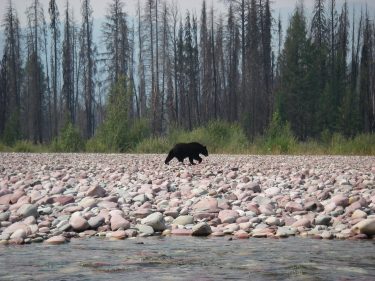
Under climate change, plants and animals will shift their habitats to track the conditions they are adapted for. As they do, the lands surrounding rivers and streams offer natural migration routes that will take on a new importance as temperatures rise.
An open-access study led by the University of Washington pinpoints which riverside routes in Washington, Oregon, Idaho and western Montana will be the most important for animals trying to navigate a changing climate. The study was published this fall in PLOS One.
“This corridor network is already there, and it’s already important for animal movement,” said lead author Meade Krosby, a scientist in the UW’s Climate Impacts Group. “Under climate change these will become ‘superhighways’ for animals that are seeking new places to live. We’ve identified ones that could be priorities for conservation and restoration.”
Co-authors are David Theobald at Conservation Science Partners, Robert Norheim at the UW’s Climate Impacts Group, and the late Brad McRae at The Nature Conservancy.
Read more at UW News »
